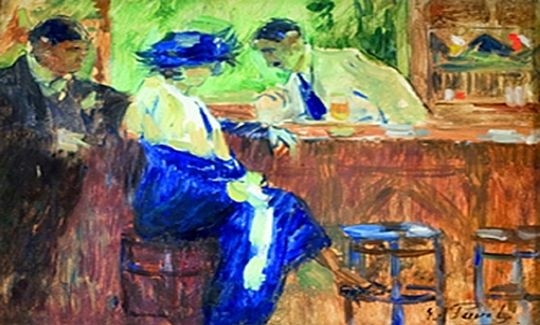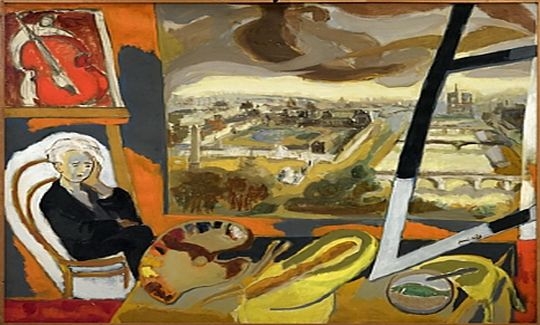In the first half of the 20th century Paris became the largest centre of Jewish artists - an unprecedented phenomenon in the history of art, also known as the Jewish School of Paris. Mané-Katz was one of the most outstanding of its representatives. In Paris, his artistic vision and his values crystallized, and it was here that he produced most of his works.
This extraordinary phenomenon of so many Jewish artists concentrated in one milieu at one time is the focus of the current exhibition. Its contents permit us to appreciate the works of the various artists which contributed so much to the crystallization of the oeuvre of Mané-Katz.
The exhibition presents more than 100 works by the artists of the School, including those of Chaïm Soutine, Amedeo Modigliani, Jules Pascin and Marc Chagall.
The exhibition is organized in two intersecting circles. The first circle examines the self-image of the Jewish artist through the prism of his experiences in the modern metropolis. It also reveals the substratum of the artistic space in which he adjusted to the "habitus" - the Parisian artistic community and its venues, and the artist's studio as the space that defined his personal and artistic identity. The second circle considers the various ways in which the artists viewed Paris as a modern space, a centre as opposed to a periphery, and their attachment to the place that embodied, for them, the "promised land" of modern art during the first half of the 20th century.
The yearning of the Jewish artists for Paris signifies a completely different reality from what we know today. Facing the works of artists of the School of Paris such as Moïse Kisling, Marc Chagall and Robert Falk, the exhibition presents works by David Adika, Yossi Breger and Yosef Dadoune. Their works suggest that the dichotomy of centre vs. margin as interpreted in the modernist era is devoid of meaning in the era of the global net, and represents the world of post-modernism, in which the term "glocal" (a synthesis of "global" and "local") has replaced the term "place". The images in these works deal with the status of Paris in the cultural canon of the West. They explore the codes and signals embedded in the semiotics of the city, and relate to the concept of the virtual space, to the new reality that has no connection with the real world.





